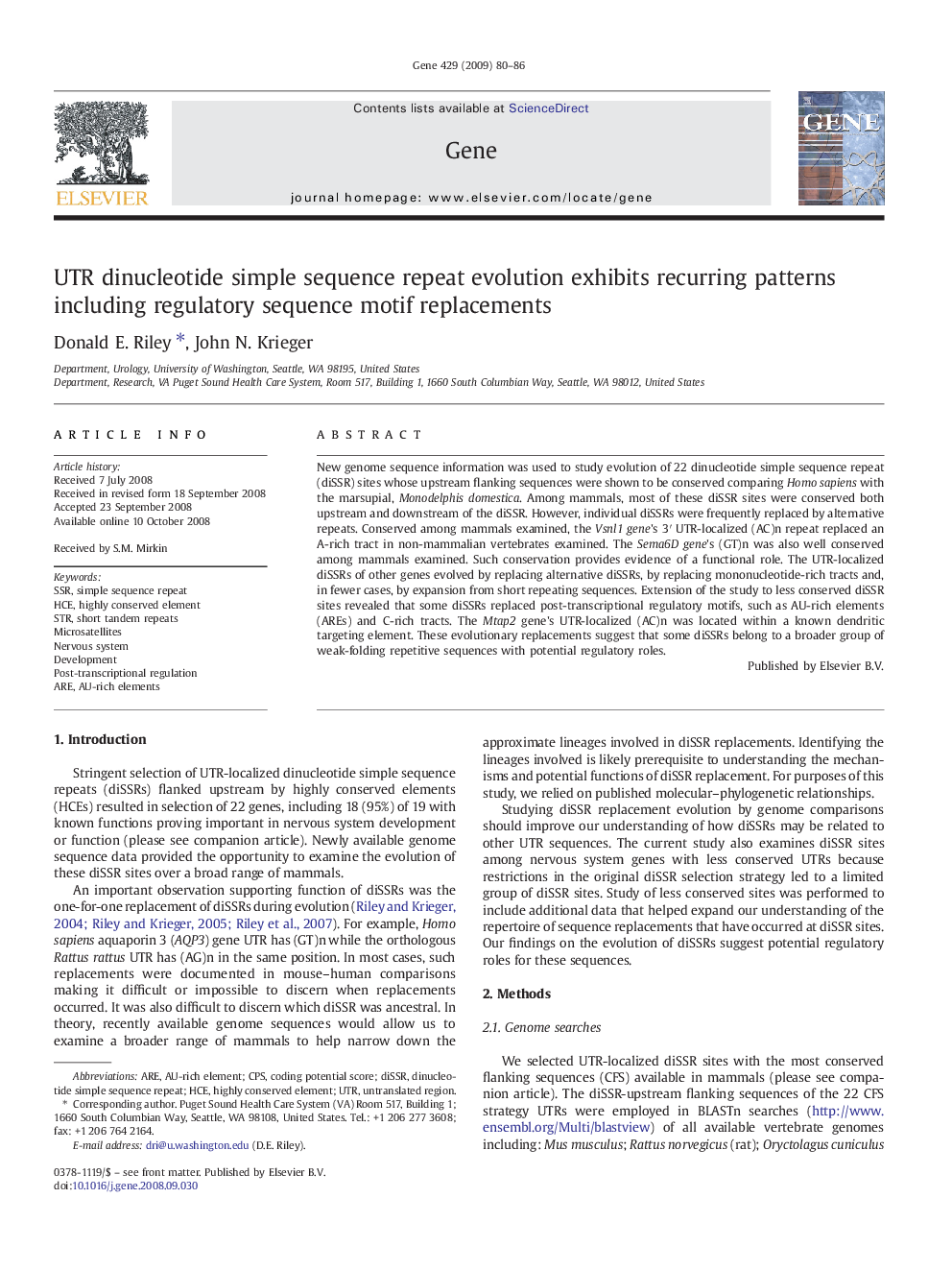| Article ID | Journal | Published Year | Pages | File Type |
|---|---|---|---|---|
| 2819051 | Gene | 2009 | 7 Pages |
Abstract
New genome sequence information was used to study evolution of 22 dinucleotide simple sequence repeat (diSSR) sites whose upstream flanking sequences were shown to be conserved comparing Homo sapiens with the marsupial, Monodelphis domestica. Among mammals, most of these diSSR sites were conserved both upstream and downstream of the diSSR. However, individual diSSRs were frequently replaced by alternative repeats. Conserved among mammals examined, the Vsnl1 gene's 3â² UTR-localized (AC)n repeat replaced an A-rich tract in non-mammalian vertebrates examined. The Sema6D gene's (GT)n was also well conserved among mammals examined. Such conservation provides evidence of a functional role. The UTR-localized diSSRs of other genes evolved by replacing alternative diSSRs, by replacing mononucleotide-rich tracts and, in fewer cases, by expansion from short repeating sequences. Extension of the study to less conserved diSSR sites revealed that some diSSRs replaced post-transcriptional regulatory motifs, such as AU-rich elements (AREs) and C-rich tracts. The Mtap2 gene's UTR-localized (AC)n was located within a known dendritic targeting element. These evolutionary replacements suggest that some diSSRs belong to a broader group of weak-folding repetitive sequences with potential regulatory roles.
Keywords
Related Topics
Life Sciences
Biochemistry, Genetics and Molecular Biology
Genetics
Authors
Donald E. Riley, John N. Krieger,
